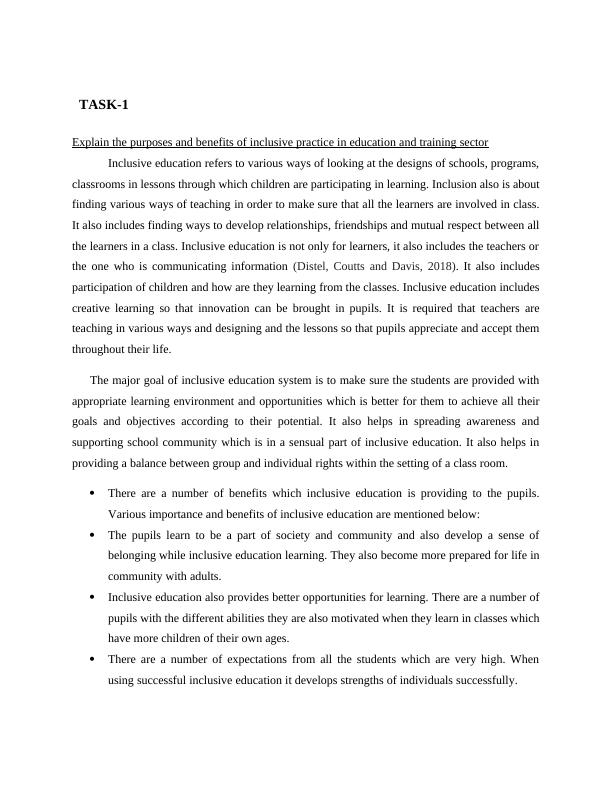Inclusive Practice in Education and Training Sector
19 Pages6475 Words55 Views
Added on 2023-01-06
About This Document
This document provides an overview of inclusive practice in the education and training sector. It explains the purposes and benefits of inclusive practice, the impact of social and cultural factors on learning, and the impact of cognitive, physical, and sensory abilities on learning. It also reviews policies and legislative frameworks influencing inclusion in schools and discusses the purpose of referral in meeting individual needs of learners. Additionally, it explores strategies for promoting inclusion and diversity in the classroom and analyzes ways to review the effectiveness of inclusive practice.
Inclusive Practice in Education and Training Sector
Added on 2023-01-06
ShareRelated Documents
End of preview
Want to access all the pages? Upload your documents or become a member.
Inclusive Practice
|20
|6785
|2
Importance and Benefits of Inclusive Practices in Education and Training Sector
|17
|6567
|85
Unit 2 Teaching Learning and Assessment in Education and Training
|53
|10585
|213
Inclusive Practice: Purposes, Benefits, and Impact on Learning
|18
|6214
|1
Unit 2 Teaching Learning and Assessment in Education and Training
|21
|7684
|172
Developing Teaching, Learning, and Assessment in Education and Training
|13
|4063
|84




